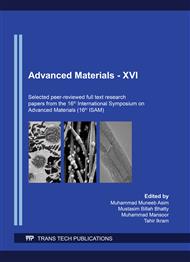p.177
p.184
p.193
p.203
p.211
p.219
p.227
p.238
p.248
Influence of Mn and TiB2 on the Microstructural Evolution of the Primary α-Al Grains and Fe Containing Intermetallic in the Wrought Al-Mg-Si Alloy
Abstract:
The most popular aluminium alloy used for the automotive applications is the wrought-Al alloy, where its popularity arises from its intrinsic characteristics such as, excellent formability, crash resistance, corrosion resistance and excellent specific strength. In the coming decades the use of aluminium alloys is expected to increase within automotive and aerospace industries, where this will source for an upsurge in Al recycling. Problems arise during Al recycling, where there is a steady build-up of Fe content, as this is recognised as being an impurity element. Fe has very little solubility in Al in its solid state and precipitation of these Fe intermetallics (IMC), in the Al matrix decrease mechanical properties, due to the Fe IMC brittle nature. These Fe-rich IMC also have very little cohesion to the Al matrix and can separate from the Al matrix resulting in the development of voids, where the initiation of microcracks becomes ostensible when subjected to thermomechanical processing. In order to curtail the damaging effect of the Fe IMC it so of importance to alter the nucleation and growth characteristic of the Fe rich IMC during solidification. Addition of trace elements and the manipulation of cooling rates have shown to be an effective technique to alter the Fe IMC morphology. In order observe the morphological evolution of the Fe IMC, various experiments were conducted using Al-1Si-1Mg-1Fe alloy with the addition of Mn and TiB2-based commercial grain refiner. Microstructural analysis of the primary α-Al and Fe IMC are observed and the morphological evolution of the Fe IMC is analysed with respects to the addition of Mn and TiB2. How the addition of these trace elements influence the growth characteristics and chemistry of the Al melt is also presented in this work.
Info:
Periodical:
Pages:
211-218
Citation:
Online since:
February 2021
Authors:
Price:
Сopyright:
© 2021 Trans Tech Publications Ltd. All Rights Reserved
Share:
Citation:


